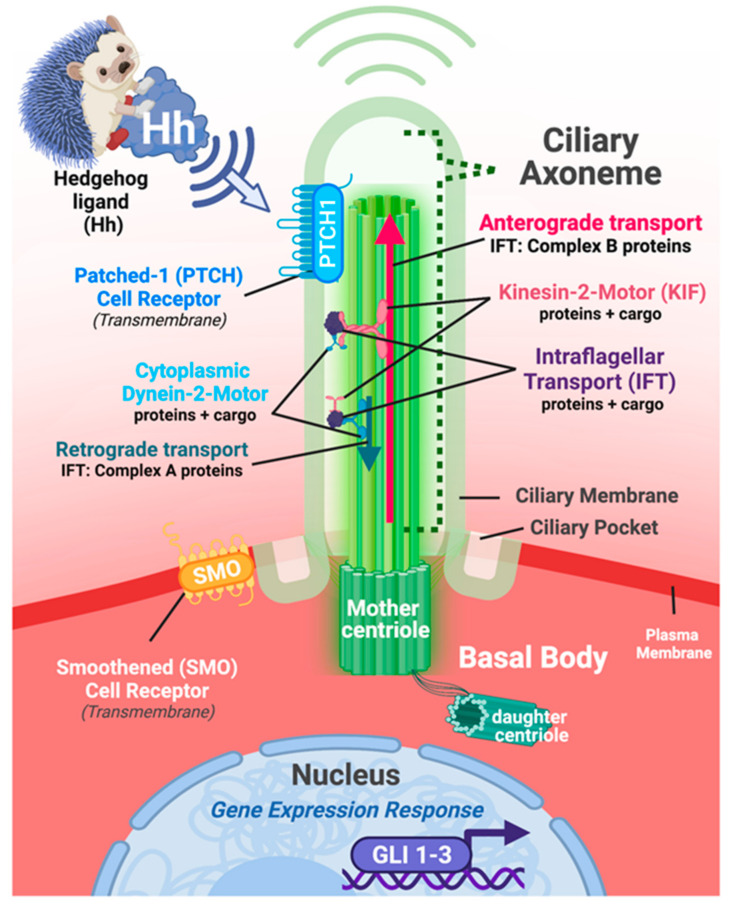Figure 3.
Primary cilia are dynamic, sensory organelles tasked with interpreting changes to and within the intra- and extracellular environments. Illustrative representation of the approximate composition and location of a generic eukaryotic cell and its intact primary cilium. On the apical surface of the cell, the primary cilium forms its axonemal portion as an extension of the plasma membrane protruding outward towards the extracellular environment. The ciliary axoneme is structurally supported within by the 9 + 0 microtubule scaffold that anchors the cilium to the body of the cell via the basal body complex, which is composed of both mother and daughter centrioles. Experimental modeling of cells, tissues, and diseases involving damage to or loss of primary cilia typically involve the genetic manipulation of genes and proteins critical for maintaining intraflagellar transport (IFT; protein + cargo) and/or kinesin-2-motor protein transport (protein + cargo). Elaboration of the cilium and maintenance of protein transport in the anterograde direction requires IFT Complex B proteins. Conversely, retrograde transport requires IFT Complex A proteins. In both directions, IFT proteins are acting as a scaffold to connect the respective motor complexes to the transported cargo components. Many receptors localize to the plasma membrane/ciliary membrane of the axoneme, the ciliary pockets and/or basal body region of the primary cilium complex, and can subsequently be affected, should genetic and/or environmental damage to the cilium occurs. The Hedgehog signaling pathway is closely associated with the primary cilium and serves as a critical regulator of mammalian development. Transduction of canonical Hedgehog signaling involves two co-receptors, Patched-1 (Ptch1) and Smoothed (SMO), both of which shuttle dynamically between the plasma membrane portion of ciliary axoneme itself and just outside of the base of the cilium. Hedgehog signal transduction leads to modification in the expression and protein activity of GLI gene family members encoding DNA-binding transcription factors (GLI 1-3). Size, length, and general structure of the cell/primary cilium illustrated above reflect a generalized example for illustrative purposes; Figure created with Biorender.com (accessed on 29 May 2022).

